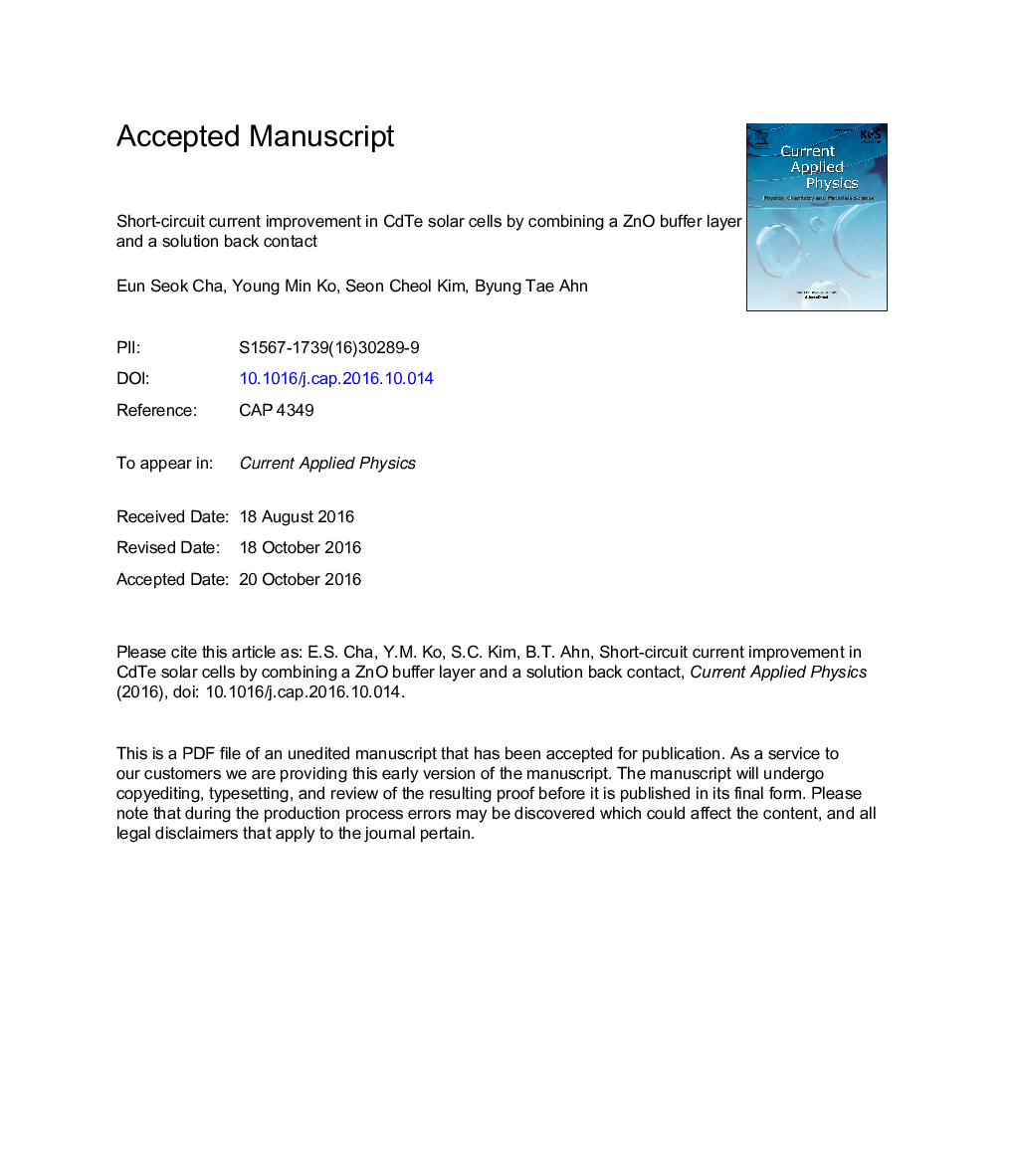| Article ID | Journal | Published Year | Pages | File Type |
|---|---|---|---|---|
| 5489023 | Current Applied Physics | 2017 | 32 Pages |
Abstract
Conventional CdTe solar cells have a CdS window layer, in which an absorption loss of photons with more than 2.4 eV occurs through the CdS layer. A thinner CdS layer was applied to enhance light transmission and a ZnO buffer layer with a band gap of 3.3 eV was introduced to suppress shunting through the thinner CdS window layer. A 100-nm thick ZnO layer sputter-deposited at 300 °C had uniform coverage on a transparent conductive oxide (TCO) after a subsequent high-temperature process. The ZnO layer was effective in preventing shunting through the CdS window layer so that the open-circuit voltage and fill factor of the CdTe solar cells were recovered and the short-circuit current was enhanced over that of the conventional CdTe solar cell. In the ZnO/CdS/CdTe configuration, the short-circuit current was further improved throughout the visible wavelength region by replacing the Cu-metal contact with a Cu solution contact. As a result the short-circuit current from 21.7 to 26.1 mA/cm2 and the conversion efficiency of the CdTe solar cell increased from 12 to 15% without antireflective coating. Our result indicates that the Cu solution back contact is a critical factor for achieving a higher cell efficiency in addition to ZnO buffer layer.
Related Topics
Physical Sciences and Engineering
Physics and Astronomy
Condensed Matter Physics
Authors
Eun Seok Cha, Young Min Ko, Seon Cheol Kim, Byung Tae Ahn,
